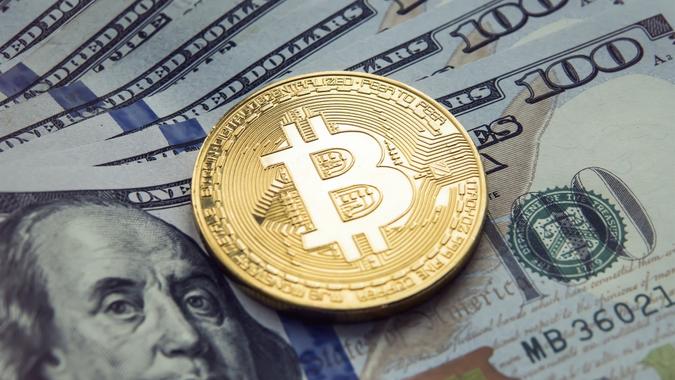
Diy13 / iStock.com
Bitcoin halving is a pivotal event in the cryptocurrency’s lifespan that reduces the number of bitcoin in circulation by one half. It cuts the reward for mining bitcoin in half and reduces the inflation rate by the same amount. It also slows down the introduction of new bitcoins into circulation, which often induces inflation by reducing supply.
But why is Bitcoin halving so important? When is the next Bitcoin halving event scheduled to take place? And what do cryptocurrency experts expect when Bitcoin halves again?
To understanding halving better, it’s first important to understand a bit of the technical details about how the Bitcoin blockchain works and how people make money from mining bitcoin.
How Does the Bitcoin Blockchain Work?
The Bitcoin blockchain is a shared, public, distributed ledger. If you understand that a ledger is a spreadsheet, or a digital database, with financial information on it, the entire blockchain may begin to make a bit more sense.
Distributed Ledger
Distributed ledgers are shared across a network — in this case, the Bitcoin blockchain. Each time the ledger is changed, those edits are replicated and distributed across the network to all users. This creates a new “block” of information in the chain.
It also makes it hard to tamper with or corrupt the chain, since a hacker would have to alter every version of the chain, not just the one with the original transaction.
On average, a new block containing multiple transactions is created every 10 minutes, confirmed, and added to the block chain through a process called mining, according to Bitcoin.org.
Cryptography
A technology called “cryptography” also helps ensure that the ledger stays secure, and no one can transfer bitcoins without permission or succeed in a cyberattack against the blockchain. Cryptography is also used to encrypt users’ digital wallets to ensure transactions cannot take place without a password, sometimes called a private key.
Cryptography is the same technology used by financial institutions and e-commerce sites to ensure that people’s funds and personal information remains secure.
But bitcoin mining also plays an important role in making sure the Bitcoin blockchain remains secure and that each transaction is valid.
What is Bitcoin Mining?
There are multiple ways you can acquire bitcoin. You can purchase bitcoin from a crypto exchange, such as Coinbase or Kraken. You can receive bitcoin as a gift. Or you can receive it by selling goods or services in exchange for crypto. Finally, you can choose to mine bitcoin.
Bitcoin mining is the process of independent, third-party verification of every transaction on the blockchain using cryptography. Bitcoin miners have machines set up to run transaction data through a cryptographic algorithm. This creates a hash, or a random string of numbers and letters that doesn’t reveal transaction data.
Hashing is designed to get more difficult over time, according to TechTarget. As time goes on, solving the cryptographic algorithms requires more computing resources and energy.
That’s one reason Bitcoin mining has gotten more difficult, which means that bitcoins received as rewards grow more valuable.
Even though we are currently experiencing a “crypto winter,” where bitcoin is nearly 70% below its all-time high, the crypto had, at one point, reached nearly $70,000 per coin in value. And, like the stock market, bitcoin’s value is expected to trend upward over the long-term, experts say.
Miners receive bitcoin rewards for using their computers, bandwidth, and energy to confirm each Bitcoin transaction on the ledger. Large transactions may require as many as six confirmation or more, while some smaller transactions only require one confirmation.
As a reward for contributing their resources in the form of mining software, mining hardware and electricity to run the mining computer, miners receive a block of Bitcoin for each transaction they verify.
What Is Bitcoin Halving?
Understanding that miners receive bitcoin for each transaction they verify makes it easier to understand the process of Bitcoin halving. When Bitcoin is halved, miners receive half as much bitcoin as they would have received previously for each verified transaction. For instance, when the first bitcoin were mined back in 2009, miners were awarded 50 BTC per block.
Halving occurs roughly every four years on a pre-set schedule. Experts predict that this will continue until roughly 2140, when the entire supply of 21 million coins has been mined.
Currently, according to Decrypt, 90% of Bitcoin’s total supply has been mined since inventor Satoshi Nakamoto mined the first million coins in 2009. Less than 2 million new bitcoin will be created between now and 2140.
A Brief History of Bitcoin Halving
We can look at the history of Bitcoin halving to see how it works — and how much harder it is to mine bitcoin today than it was in 2009.
In 2012, about four years after the first bitcoin was mined, the reward for mining dropped to just 25 BTC. In 2016, miners received just 12.5 BTC per coin. In 2020, rewards dropped to 6.25 BTC.
This scarcity tends to make BTC more valuable for a time. But, of course, the price of BTC does not exist in a vacuum and the rest of the economic climate, the stock market, consumer demand for BTC and consumer confidence surrounding investing all have an effect on BTC prices.
It will be interesting to see how a halving event affects BTC prices if the market is still experiencing a crypto winter prior to the next event.
Is Halving Good for Bitcoin?
In general, the answer to the question, “Is halving good for Bitcoin?” is a resounding “yes.” And while it may be more challenging for miners to acquire bitcoin after a halving event, this scarcity often makes the BTC they already hold more valuable.
In 2020, the price of bitcoin rose by 40% and increased by 85% from its historic low just prior to the halving event. However, this event was clouded by a down economy and economic fears sparked by the coronavirus pandemic. The year 2020 will always require a footnote for statistical data.
Nevertheless, the halving events in November 2012 and July 2016 also drove the price of bitcoin up, ultimately. “This deflationary event has historically signaled the start of bitcoin’s most dramatic bull runs over a period of several years, although not before a brief sell-off,” Reuters reported.
Between 2012 and 2014, BTC rose by 10,000%, according to Reuters. In mid-2016 through the end of 2017, it increased by roughly 2,500%.
Bitcoin Halving and Value Increases: There’s More to the Story
Experts point out that the rise in bitcoin’s value following a halving event is not usually immediate. As their BTC rises in value, many times investors will sell off what they are holding to cash in on the profits. That’s why a halving event often creates a sell-off, which drives prices down, prior to a bull run.
This occurred in both 2012 and 2016, and also in 2020, in spite of other economic factors at play.
Additionally, some experts state that halvings are already “priced in” to the coin’s value, which means that a halving event and bitcoin price increase may not be directly correlated.
Binance founder Changpeng Zhao pointed out to Reuters reporters, “Historic events don’t necessarily predict future events.” Noting that there is a psychological aspect to each halving event, Zhao had mentioned in 2020 that miners might be less willing to sell off their existing crypto investments because “it will cost the miners almost double to produce bitcoin.”
However, by May 2021, bitcoin had increased in value by 533%. In fact, the most recent halving event exceeded investors’ wildest expectations for a Bitcoin bull run. In November 2021, the cryptocurrency achieved its all-time high of over $68,000.
Other Factors Affect Prices
There are other factors at play that drive bitcoin’s price up following a halving event. With the increased costs to mine bitcoin — and the reduced rewards — there may be fewer miners. This will contribute to the coin’s scarcity and further raise the price of the existing supply for investors.
In 2021, specifically, PayPal’s launch of cryptocurrency buying and selling features increased mainstream acceptance of crypto, and EV automaker Tesla’s purchase of $1.5 billion in bitcoin contributed to the cryptocurrency’s rise.
However, the effects of a Bitcoin halving event can’t be expected to last forever, either. An overall market slump, record-high inflation of the U.S. dollar, rising interest rates, supply chain issues and other pandemic-related factors drove Bitcoin’s price down in 2022, plunging the market into a crypto winter.
What Date Is Bitcoin Halving?
Experts predict that the next Bitcoin halving event will take place around May 4, 2024, when 840,000 blocks have been created on the Bitcoin blockchain. That means we are more than halfway to the next halving event from the previous one, which occurred on May 11, 2020.
It’s important to note that halving events occur after a specific number of bitcoins have been mined, not based on a specific time schedule. Therefore, halving dates are approximate. This can leave investors guessing whether they should purchase bitcoin before the event, and how much time they will have before an event to make their decision.
Historically, BTC’s value increases following a halving event — although that is also not a given and how long it will take for the value to increase is not always consistent, either.
What Will Happen when Bitcoin Halves in 2024?
After the next halving event in 2024, miners will receive just 3.125 BTC for every block mined. Experts calculate that if the daily average number of blocks mined stays consistent, 450 coins will be released each day following the May 2024 halving event.
Market Effects
It’s worth noting that other cryptocurrencies tend to follow the market values for bitcoin. This halving event could very well help end the crypto winter and kick off another bull run for all cryptocurrencies. The last crypto winter lasted until roughly December 2020, six months prior to the May 2020 halving event.
People investing in crypto in preparation for the halving event could have helped end crypto’s bear run. Cryptocurrency also managed to avoid the pandemic-related bear market that the stock market experienced in Spring 2020, thanks to the halving event.
However, exactly how Bitcoin, specifically, and the cryptocurrency market, in general, will react to the next halving events depends on a variety of economic factors.
Robert Johnson, professor of finance at the Heider College of Business at Creighton University told Forbes, “I don’t expect crypto to come roaring back as it did in 2021 because the tailwind of Federal Reserve monetary policy has actually become a headwind for the asset class.”
Should You Invest in Bitcoin Now?
Some investors, including Fidelity Investments CEO Abigail Johnson, believe now is the time to “double down” on crypto, including bitcoin. Certainly, purchasing bitcoin from an exchange is easier — and less expensive — than setting up a mining computer and running it consistently to cash in on mining rewards.
Should You Start Mining Bitcoin?
But, if you’re looking to begin mining bitcoin, it’s not too late to start. Remember, as the reward for each bitcoin drops to half its current value in 2024, more people may decide to stop mining. This will leave the market open for opportunities for industrious new miners.
Buy Bitcoin Worldwide mentions that you need efficient, affordable mining hardware, a low-cost source of electricity and a reliable mining pool, which is how you find blocks to mine.
It is difficult for amateur miners, rather than large firms, to find highly efficient mining machines and gain access to low-cost electricity to make mining profitable. It’s much easier for a Bitcoin farm running multiple machines to access cheap electricity — often in the form of solar power — than for an individual to secure what’s needed to mine bitcoin profitably.
However, it may be worth looking into mining other alt-coins and ride the wave as they increase in value following in the wake of Bitcoin’s next bull run.
Takeaway
The next Bitcoin halving event, expected to take place around May 4, 2024, could end the current crypto winter if other factors don’t send bitcoin on a rally before then.
If you’re looking to invest, it may be time to do so now, before the halving event diminishes Bitcoin’s available supply and raises the price.
Our in-house research team and on-site financial experts work together to create content that’s accurate, impartial, and up to date. We fact-check every single statistic, quote and fact using trusted primary resources to make sure the information we provide is correct. You can learn more about GOBankingRates’ processes and standards in our editorial policy.

You can get bonuses upto $100 FREE BONUS when you:
💰 Install these recommended apps:
💲 SocialGood - 100% Crypto Back on Everyday Shopping
💲 xPortal - The DeFi For The Next Billion
💲 CryptoTab Browser - Lightweight, fast, and ready to mine!
💰 Register on these recommended exchanges:
🟡 Binance🟡 Bitfinex🟡 Bitmart🟡 Bittrex🟡 Bitget
🟡 CoinEx🟡 Crypto.com🟡 Gate.io🟡 Huobi🟡 Kucoin.


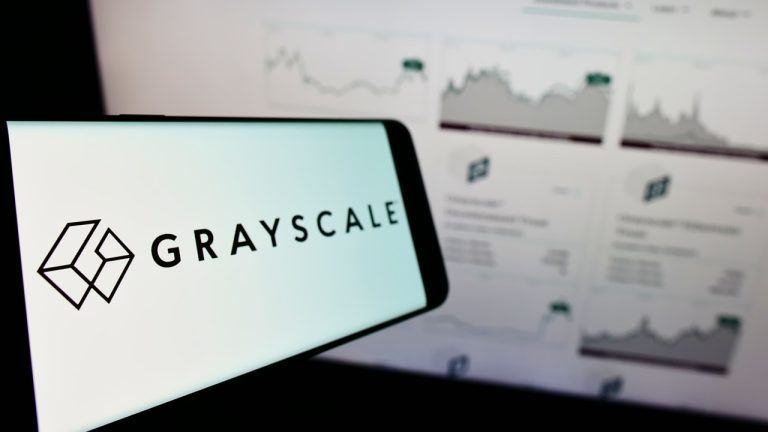
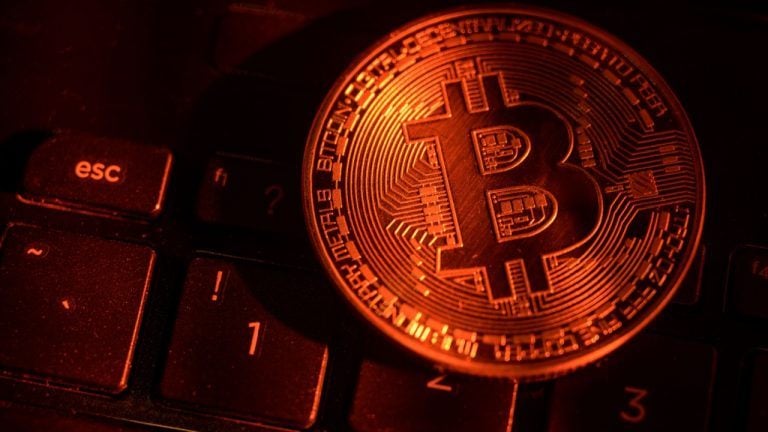

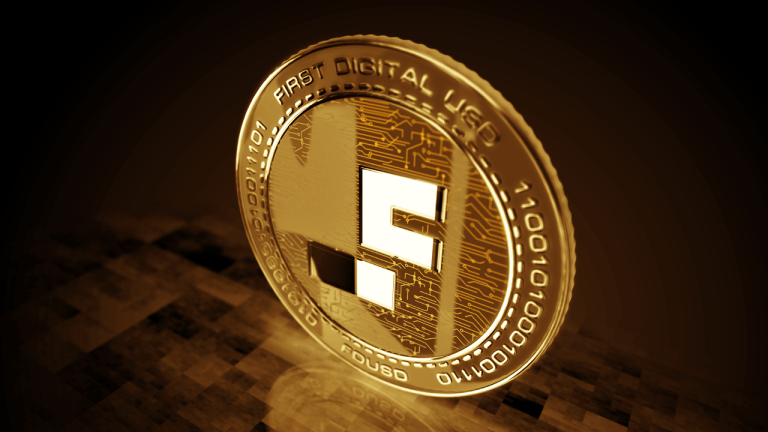



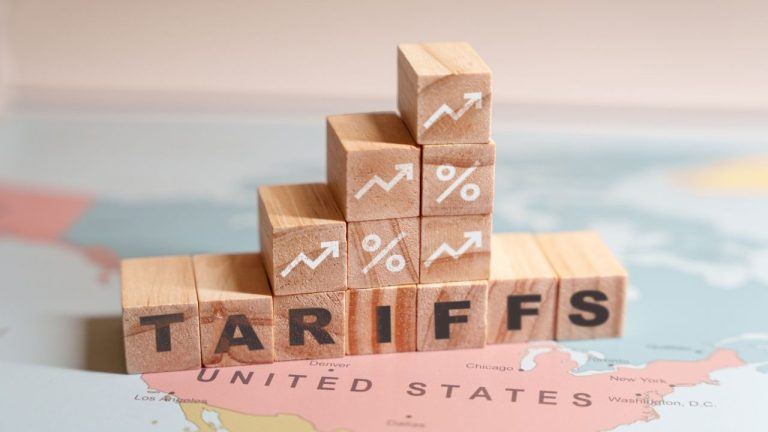





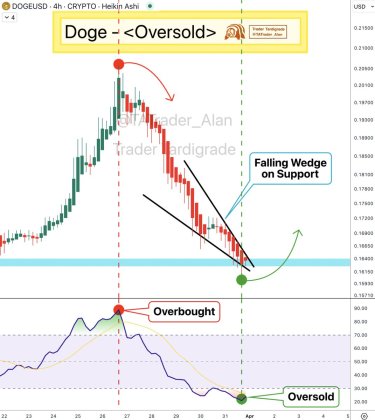



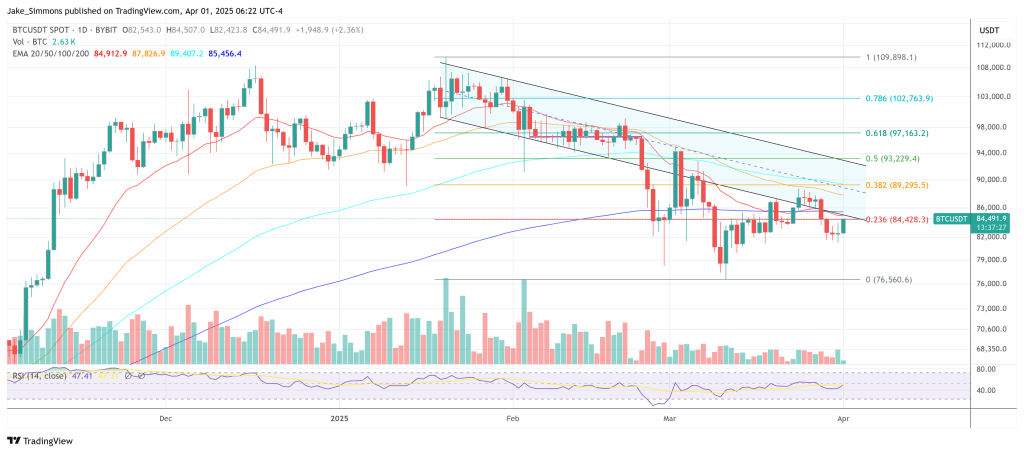

Comments